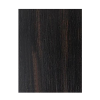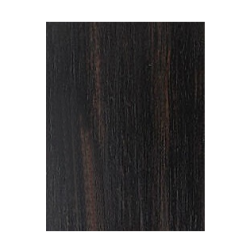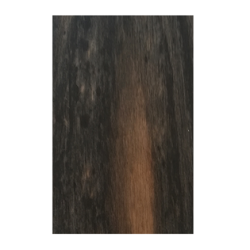African ebony / Gabon ebony

Family: Ebenaceae Order: Ericales - Class: Magnoliopsida
Scientific
name: Diospyros crassiflora Hiern
Trade name: Ebony
Also
known as African Ebony or Black Ebony ( English); Ebene (Benin); Ebène (France).
Origin: Equatorial West Africa. From
Nigeria to the Democratic Republic of the Congo
Instrumental
uses:
Guitar back and sides, fingerboards, bridges, head plates, bindings, peg heads,
turnery and woodwind parts.
Tonal
properties:
Gabon ebony
has a glassy tap tone, it rings like a bell. It is highly projective and one
can find here many of the good properties found in the harder rosewoods as deep
basses and bright trebles. It will produce a beautiful master instrument.
Incredible sustain, very clear tone and projection, and a very articulate bass,
very concise attack, strong voice. Between Rosewoods and Mahoganies.
Gabon ebony is among the most
expensive lumbers. The small size of the tree makes it very difficult to take
wood with measures for guitar backs. Due to its density and oils present it is
a bit harder to work but it finishes well and polishes to a high lustre.
Dense, stiff and strong wood with an average density of dry weight of 60 lbs/ft3 - 955 kg/m3.
Diospyros
crassiflora grows in semi-deciduous forests. It is a gregarious species found
in almost pure stands near riverbanks. The tree may reach a height of 15 m. The
bole is short, up to 10 m, straight and fluted. The trunk diameter may attain
100 cm.
The sapwood is pale brown to reddish,
eventually with black spots, it has a thickness of up to 15 cm. The heartwood
is uniform jet-black or black brown or dark brown with black streaks, it is
clearly demarcated.
CITES Status
is unrestricted. Is reported on the IUCN Red List as vulnerable.
Gallery Photos




